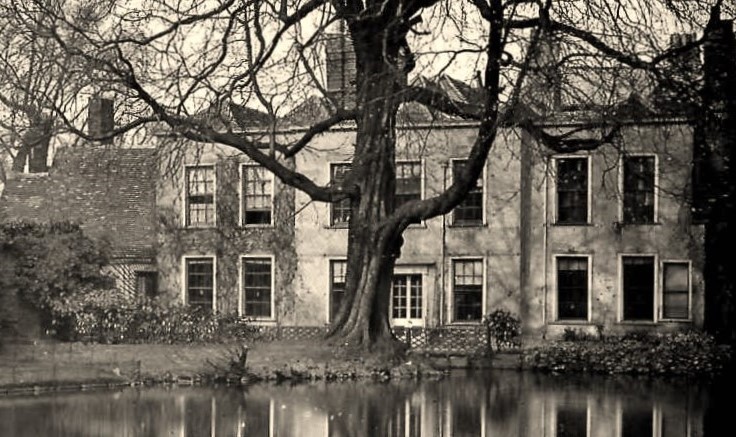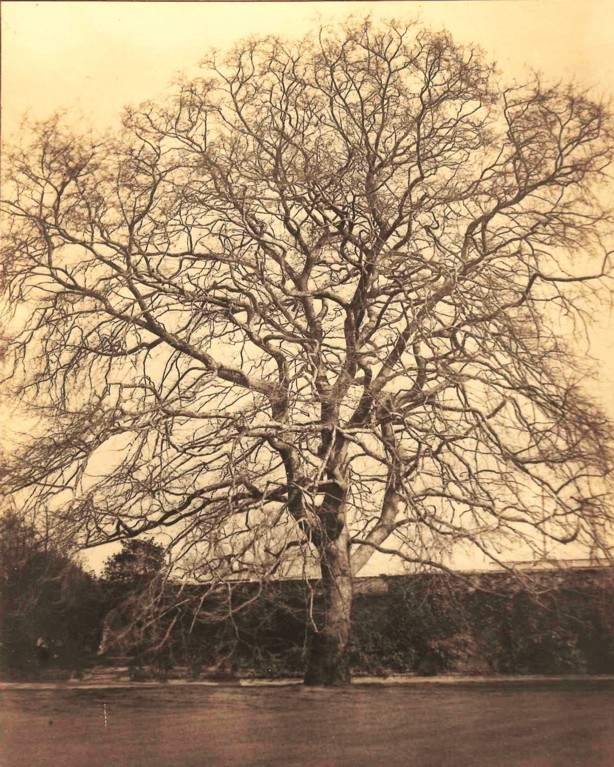Blog
29 July 2025
O is for … Old Emmanuel House

The name ‘Old Emmanuel House’ was never applied to a college building during its lifetime. The term was coined, primarily, so that college record keepers could distinguish between the current Emmanuel House, erected in 1894, and the property demolished to make way for it. The earlier building was known for most of its existence as ‘the Dwelling House’, to distinguish it from the college brewhouse, with which it was contiguous. Constructed in 1647 at a cost of nearly £72, the Dwelling House was, like the brewhouse, let to tenants. Its appearance, as depicted in an engraving of 1690, bears little resemblance to the house shown in photographs of the 1880s and ’90s (pictured), so much rebuilding must have taken place. According to a surveyor’s report of 1890, the Dwelling House was ‘very badly built, and consists largely of wood, which is in a very rotten condition; moreover the parts which are of brick…have in many places settled to a considerable and dangerous extent’. The surveyor judged the building to date from the early eighteenth century, stating confidently that it was ‘Evidently (as its details show) by Sir Christopher Wren or one of his pupils’. Unfortunately, there is nothing in the archives to confirm this intriguing claim. The rickety, creaky character of the old house, and perhaps a scampering rat or two, may help explain why several mid-Victorian tenants claimed to have heard, or seen, a ghost. The capricious phantom’s manifestations were either heavy-footed or spookily silent, and sometimes took the form of a grey-shrouded woman (that old favourite!). In 1885 the Dwelling House was taken back into college hands, named ‘Emmanuel House’, and fitted up as a residence for the Senior Tutor and his wife. Demolished a decade later, the building has since had an incorporeal existence as ‘Old Emmanuel House’.
O is for … Oriental plane

Emmanuel’s most famous tree is the magnificent Platanus orientalis in the Fellows’ Garden. With its enormous crown, beautiful bark and convoluted branches, the tree attracts many admiring visitors. Its exact age is unknown. Oriental planes grow at the rate of about an inch a year girthwise, so our tree’s waistline suggests an approximate planting date of 1816. The earliest photograph of the tree (pictured), taken between c.1890 and 1910, shows a fine, but not exceptional, specimen. In the following decades, however, the tree’s ‘weeping’ habit developed spectacularly, and its drooping branches now form a stunning green pavilion in summer. The drawback of this grounding habit is that the new growth issuing from the earthed branches weakens the main bole. The college was advised some years ago that all the grounded branches should ideally be severed, but this was felt to be too drastic. A certain amount of pruning is undertaken, however, and the tree is regularly inspected by experts. It is currently in robust health, and may live for several hundred more years. When the tree eventually fails, its offspring will live on, as seedlings have been planted elsewhere in Cambridge and beyond. The plane was the subject of a famous poem, El arbol, written in 1944 by Luis Cernuda. He was then a teaching assistant at Emmanuel, but went on to become one of Spain’s most celebrated poets. El arbol is a rather mournful reflection upon youthful promise (‘so soon to wither’), time mis-spent, and the regrets of old age. The ‘beautiful’ tree, however, is ‘Free of the mortal deceit that time develops, And as the light fades from its top in the evening, When the shadows slowly overcome the breeze, It only appears sad to those who look upon it sadly, This creature of a magic world where man is a stranger’.
Amanda Goode, College Archivist